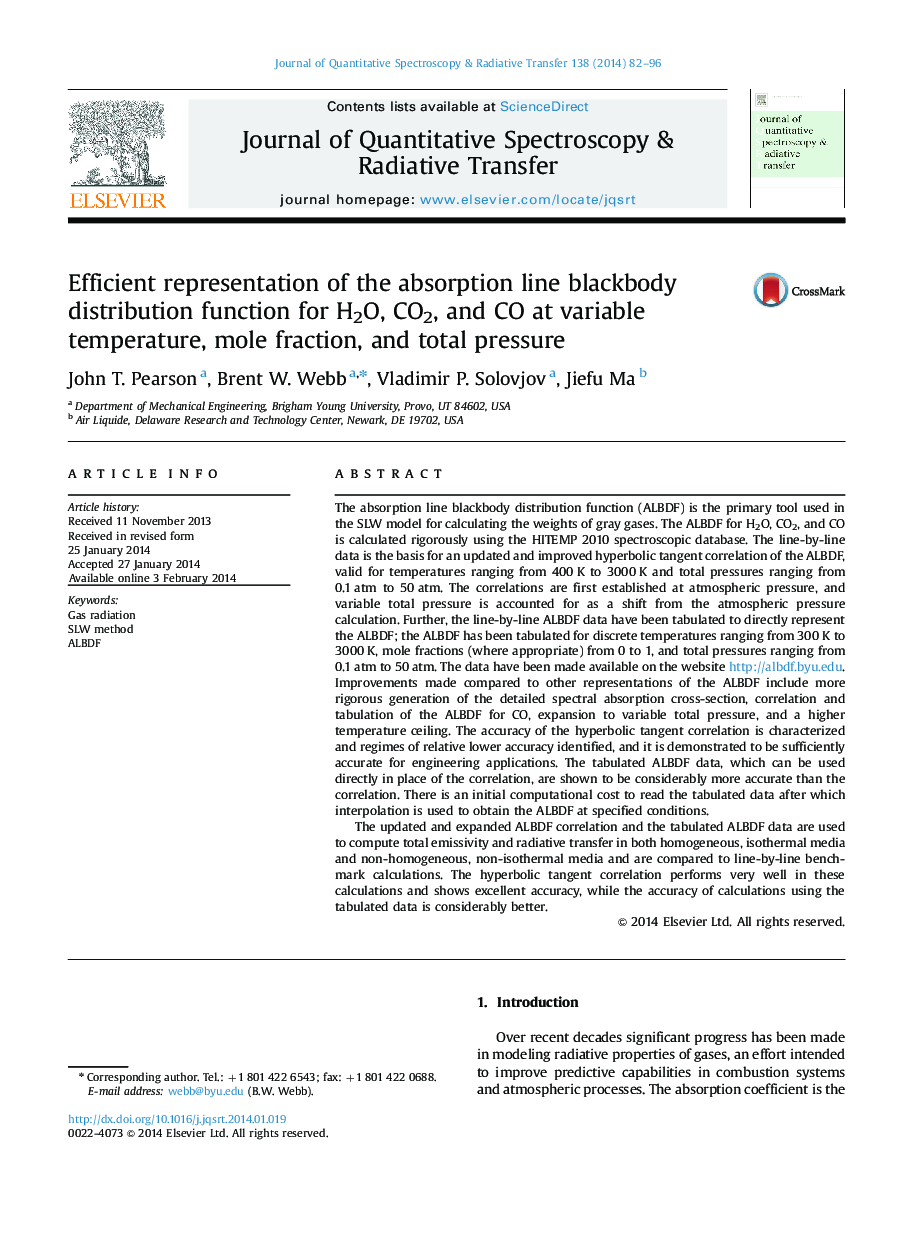| Article ID | Journal | Published Year | Pages | File Type |
|---|---|---|---|---|
| 5428462 | Journal of Quantitative Spectroscopy and Radiative Transfer | 2014 | 15 Pages |
â¢The absorption spectrum was calculated for H2O, CO2, and CO from the HITEMP 2010 database.â¢Ranges studied: temperature 400-3000 K, total pressure 0.1-50 atm, and mole fraction 0-1.â¢The ALBDF was generated over the full temperature, pressure, and mole fraction range.â¢The ALBDF was presented in both updated hyperbolic tangent correlation and tabulated data form.â¢Use of the ALBDF was demonstrated in predictions along with comparison to line-by-line benchmarks.
The absorption line blackbody distribution function (ALBDF) is the primary tool used in the SLW model for calculating the weights of gray gases. The ALBDF for H2O, CO2, and CO is calculated rigorously using the HITEMP 2010 spectroscopic database. The line-by-line data is the basis for an updated and improved hyperbolic tangent correlation of the ALBDF, valid for temperatures ranging from 400Â K to 3000Â K and total pressures ranging from 0.1Â atm to 50Â atm. The correlations are first established at atmospheric pressure, and variable total pressure is accounted for as a shift from the atmospheric pressure calculation. Further, the line-by-line ALBDF data have been tabulated to directly represent the ALBDF; the ALBDF has been tabulated for discrete temperatures ranging from 300Â K to 3000Â K, mole fractions (where appropriate) from 0 to 1, and total pressures ranging from 0.1Â atm to 50Â atm. The data have been made available on the website http://albdf.byu.edu. Improvements made compared to other representations of the ALBDF include more rigorous generation of the detailed spectral absorption cross-section, correlation and tabulation of the ALBDF for CO, expansion to variable total pressure, and a higher temperature ceiling. The accuracy of the hyperbolic tangent correlation is characterized and regimes of relative lower accuracy identified, and it is demonstrated to be sufficiently accurate for engineering applications. The tabulated ALBDF data, which can be used directly in place of the correlation, are shown to be considerably more accurate than the correlation. There is an initial computational cost to read the tabulated data after which interpolation is used to obtain the ALBDF at specified conditions.The updated and expanded ALBDF correlation and the tabulated ALBDF data are used to compute total emissivity and radiative transfer in both homogeneous, isothermal media and non-homogeneous, non-isothermal media and are compared to line-by-line benchmark calculations. The hyperbolic tangent correlation performs very well in these calculations and shows excellent accuracy, while the accuracy of calculations using the tabulated data is considerably better.
